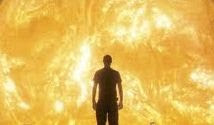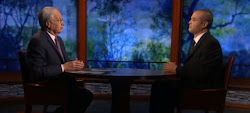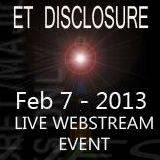| Dear Friends,
http://phys.org/news/2012-12-simulation-idea.html
Be Well.
David

Do we live in a computer simulation? Researchers say idea can be tested December 10, 2012 Enlarge
The
conical (red) surface shows the relationship between energy and
momentum in special relativity, a fundamental theory concerning space
and time developed by Albert Einstein, and is the expected result if our
universe is not a simulation. The flat (blue) surface illustrates the
relationship between energy and momentum that would be expected if the
universe is a simulation with an
underlying cubic lattice. Credit: Martin Savage A decade ago, a British
philosopher put forth the notion that the universe we live in might in
fact be a computer simulation run by our descendants. While that seems
far-fetched, perhaps even incomprehensible, a team of physicists at the
University of Washington has come up with a potential test to see if the
idea holds water.
The concept that current humanity could possibly be
living in a computer simulation comes from a 2003 paper published in
Philosophical Quarterly by Nick Bostrom, a philosophy professor at the
University of Oxford. In the paper, he argued that at least one of three
possibilities is true: The human species is likely to go extinct before
reaching a "posthuman" stage. Any posthuman civilization is very
unlikely to run a significant number of simulations of its evolutionary
history. We are almost certainly living in a computer simulation. He also held
that "the belief that there is a significant chance that we will one day
become posthumans who run ancestor simulations is false, unless we are
currently living in a simulation." With current limitations and trends in
computing, it will be decades before researchers will be able to run even
primitive simulations of the universe. But the UW team has suggested tests that
can be performed now, or in the near future, that are sensitive to constraints
imposed on future simulations by limited resources. Currently, supercomputers
using a technique called lattice quantum chromodynamics and starting from the
fundamental physical laws that govern the universe can simulate only a very
small portion of the universe, on the scale of one 100-trillionth of a meter, a
little larger than the nucleus of an atom, said Martin Savage, a UW physics
professor. Eventually, more powerful simulations will be able to model on the
scale of a molecule, then a cell and even a human being. But it will take many
generations of growth in computing power to be able to simulate a large enough
chunk of the universe to understand the constraints on physical processes that
would indicate we are living in a computer model.
However, Savage said, there are signatures of resource constraints in present-day simulations that are likely to exist as well in simulations in the distant future, including the imprint of an underlying lattice if one is used to model the space-time continuum. The supercomputers performing lattice quantum chromodynamics calculations essentially divide space-time into a four-dimensional grid. That allows researchers to examine what is called the strong force, one of the four fundamental forces of nature and the one that binds subatomic particles called quarks and gluons together into neutrons and protons at the core of atoms. "If you make the simulations big enough, something like our universe should emerge," Savage said. Then it would be a matter of looking for a "signature" in our universe that has an analog in the current small-scale simulations. Savage and colleagues Silas Beane of the University of New Hampshire, who collaborated while at the UW's Institute for Nuclear Theory, and Zohreh Davoudi, a UW physics graduate student, suggest that the signature could show up as a limitation in the energy of cosmic rays. In a paper they have posted on arXiv, an online archive for preprints of scientific papers in a number of fields, including physics, they say that the highest-energy cosmic rays would not travel along the edges of the lattice in the model but would travel diagonally, and they would not interact equally in all directions as they otherwise would be expected to do. "This is the first testable signature of such an idea," Savage said. If such a concept turned out to be reality, it would raise other possibilities as well. For example, Davoudi suggests that if our universe is a simulation, then those running it could be running other simulations as well, essentially creating other universes parallel to our own. "Then the question is, 'Can you communicate with those other universes if they are running on the same platform?'" she said. Provided by University of Washington. |
Read more at: http://phys.org/news/2012-12-simulation-idea.html#jCp





No comments:
Post a Comment